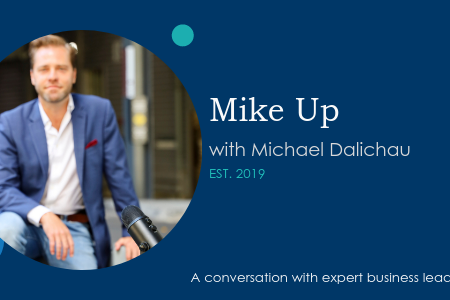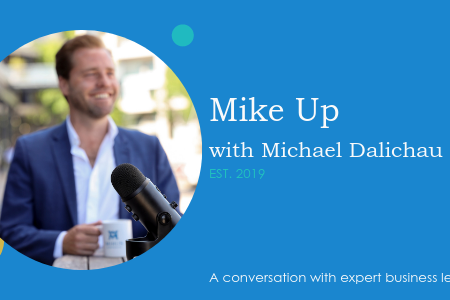How I met your customer (Part 2)
March 5, 2019 | Aged Care Management

Part 2. How do I execute a pricing strategy?
Please join Mike Up with Michael Dalichau. A conversation with expert business leaders. Michael has a conversation with leaders via his podcast, providing another channel for connection during the complex changes facing the Australian Aged Care Industry. Michael believes the inner pull to change and the external need for change are linked. Based on the data we analyse at Mirus Australia and meetings with business leaders, it’s our experience that many are feeling overwhelmed by the noise and current demands across the entire aged care system. Mike Up provides continued education and bite-sized information that is easy to digest and challenges people to keep asking questions, discover more and consider what needs to be changed.
Michael has a conversation with Chris Petzoldt, Partner & Managing Director Oceania, Simon-Kucher & Partners. Simon–Kucher is the globally leading top-line consulting firm. They help clients grow their revenues and profits by optimising their strategy, offer, pricing, and sales. Actionable recommendations and measurable KPI improvements are the results.
So let’s recap on what is pricing from part 1 of how I met your customer.
- Understand what your customers need
- Understand how you can fulfil those needs
- Understand how you can full those needs better than your competitors
What are the requirements and how do we execute?
“You have to understand your business in detail and to the core. Many think data is the answer to everything. Unless you have the capabilities and capacity to build a structure in one place, to analyse and most importantly to derive insights from the data, then it doesn’t make sense to store data.
Organisations can have more data than they can analyse and often they don’t know what to look for. That is a capability missing not only in aged care but many industries on how to understand and interpret data and draw conclusions.”
You have customers across airline, ride sharing and healthcare industries, how many in your experience have data interpretation skill set in-house?
“Often it’s a skill that is lacking. There are industries like Retail where they have millions of lines of transactional data and experts providing analysis and interpretation. But many industries, for example, Childcare; collect information e.g. when a child checks in, when they check out, or if a child is sick for example, and the data is put aside for a couple of weeks and even if they reviewed, how would they interpret it?
Often when we work with clients, its a jump start approach to this capability and how to pull the data together and what to look for. Many hire someone in that space or utilise internal IT people who have the capacity to collate. But do they know what to look for?”
So let’s say you have access to data and interpretation of data, where do you go to from there?
“You need people to understand how to ensure the customer’s voice is included when it comes to research. Large organisations may have that in-house or work to get customer feedback. Like we discussed in part 1 of the series, it’s important to ask how you ask certain questions otherwise, you get answers that you wouldn’t need to ask in the first place because the answers are obvious.
So that explains capability. Then you need someone who can pull all that together. A lot of large organisations try to put a commercial or pricing team together which reviews the data, the research and what is happening in the market like reviewing benchmarks, overseas or in other industries. Effectively putting all these puzzle pieces together and understanding what the picture and understanding what bits are missing? So often that work needs to go across different silos in a business.
If you look at aged care, for example, an organisation may not start with the customer but will look at the organisational silos. But the same customer that is receiving in-home care may end up in a nursing home and you don’t want to manage and support them as a completely new customer. Unless you have a strategy for how to manage that customer over a lifetime and a seamless transition over your product and service offering you are starting over and over again.
Where to from there?
You can’t underestimate good project management in the day-to-day job of data management. You really need a team who can manage the project and the change management. Outside of the day-to-day business. Unless you have a least 50% of a Full-time equivalent (FTE) dedicated to a task like this it’s not going to work. Anytime you change product or price there is more change management required than say cost reduction. If you change the price on a Nappy product, for example, there is not much to explain but if you change your product, your organisation needs to embrace and live the changes.
You need change agents who are strong in driving change forward and the “guts’ to actually do it. Another mistake we see during execution is people try and do everything themselves. It’s almost the year 2020 and there are so many opportunities when it comes to software, apps and processes which you can buy off the shelf and it doesn’t take long to develop an approach. So, in the make or buy investigation, look at who you can cooperate with and who can help you to accelerate rather than trying to reinvent the wheel and rather than trying to do it all yourself. In the technology industry it’s a very common thing, but in the less mature markets, it’s something to look at.
Based on your extensive experience what’s going to happen in the future?
If you look across industries, there is a very big trend away from ownership to usage. We see automotive subscriptions and airline subscriptions some better, some worse. If you talk to people in real estate, they believe in 10 years people will buy the right to have access to a certain type of apartment. You may have a subscription, where you pay a weekly or monthly fee, and you can have a 2-bedroom apartment in Sydney and a 3-bedroom apartment in Brisbane. So, you don’t own it anymore and you are not locked into a long-term contract for one particular place. It might be furnished and have food in the fridge, so convenience, flexibility and the reduction of ownership its definitely something we are seeing across industries. In regulated industries, we will have to see how that will play out but it’s a benefit of the customer it may be something to lobby for in an industry that is so regulated.
What should our Podcast listeners take away from today?
- Start with the customer, don’t start with your own internal view as that might be very different from what your customers see.
- Review how you can provide the value to the customer in light of the current Royal Commission
- If you can provide and prove value customer, you are in a good spot.
- Don’t be afraid to charge for what you generate as value
Part 1. How I met your customer.
Chris Petzoldt is Partner & Managing Director Oceania at Simon-Kucher & Partners. Chris has more than 18 years of global consulting experience and opened Simon-Kucher’s Australian operations in 2011. He primarily works in the areas of monetisation strategies (offer design, pricing, sales) for tech, software, telecoms, and media clients. He has conducted more than 150 projects in that space across Australia, New Zealand, Europe, Asia, Middle East, Oceania, and South America. Clients include large listed entities, unicorns as well as upcoming Internet startups. Chris is a regular presenter at executive conferences around the world like Marcus Evans, NeoEdge, Salvo, GSMA Asia, Zuora Subscribed and others. Chris studied business administration at the University of Kiel and at the School of Business and Commercial Law Gothenburg, Sweden. He majored in Innovation Management and Marketing. For more information about Simon-Kucher, please click here. To connect with Chris on LinkedIn, please click here. Also, if you’d like us to talk about a specific topic with an expert business leader, please request a podcast here!


